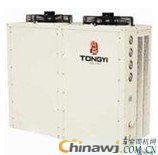Heat pump technology is an effective way to solve heating in the south
2025-07-03 10:53:58
With the cold weather sweeping both northern and southern China this year, the issue of "Southern heating" has sparked widespread discussion across various media platforms. As a native of Wuxi who now works in Jinan, I have personally experienced the stark differences in winter living conditions between the South and the North. Due to the discomfort of the cold and damp climate in my hometown during winter, I've avoided returning for the Spring Festival for many years. However, as living standards improve, there is a growing consensus that proper heating solutions are essential for southern provinces along the Yangtze River. Today, people are increasingly adopting available technologies like electric heaters, air conditioners, and gas stoves to improve their comfort during the colder months. The current debate centers on whether centralized heating should be introduced in the South and whether more efficient alternatives exist.
When it comes to solving the heating problem in the South, the first thought that comes to mind is the centralized heating systems used in Northern China. Although many officials and representatives have called for the expansion of such systems, progress has been slow. This isn't because governments are ignoring public needs, but rather due to technical and economic challenges that remain unresolved. Each heating technology has its own pros and cons, and what works well in the North may not be the best fit for the South. One major difference is the length of the heating season: in the North, it can last up to 210 days, while in Jinan it's around 120 days. In the South, the heating period is much shorter and less intense, making large-scale centralized heating economically unviable. Additionally, existing urban areas are already built with infrastructure that makes large-scale implementation of central heating nearly impossible.
So, what are the alternatives? Gas heating offers a decentralized option, but expanding it nationwide would require a reliable gas supply, which depends on national energy policies. Moreover, users report high costs, making it unaffordable for many. Electric heating is another common solution, but most electric devices—like space heaters or electric blankets—are inefficient and costly in terms of energy use. They also place a heavy burden on the power grid during peak times. A better alternative is heat pump technology, which is far more energy-efficient and versatile.
Heat pumps work by transferring heat from a low-temperature source to a high-temperature one using electricity. Unlike direct electric heating, they consume significantly less power—often just 1/4 of the energy needed for traditional electric heating. This makes them more cost-effective and environmentally friendly. Heat pumps can also serve dual purposes, acting as both heaters and air conditioners, which is especially beneficial in the South where summer cooling is also necessary. They can be scaled from small, individual units to large central systems, making them suitable for both urban and rural areas.
There are two main types of heat pumps: air-source and ground-source. Air-source heat pumps draw heat from outdoor air, but their efficiency drops in extreme cold, requiring additional heating sources. Ground-source heat pumps, on the other hand, use the stable temperature underground (around 18°C in the Yangtze River region) to provide consistent heating and cooling throughout the year. These systems are more efficient, sustainable, and ideal for regions with fluctuating temperatures.
Ground-source heat pump technology has been widely used in Europe and North America since the 1950s and has gained global recognition for its energy-saving benefits. In China, it has been promoted as part of national energy conservation policies, including the 2007 Energy Conservation Law and the 2012 12th Five-Year Plan. While central heating remains dominant in the North, ground-source heat pumps are becoming a popular choice in the South, especially for buildings not connected to city heating networks or those with high cooling demands. With growing expertise and research in China, ground-source heat pumps are emerging as a key solution to the "Southern heating" challenge.


solar emergency light price,solar emergency lamp,best solar rechargeable emergency light,solar emergency light for home;best solar light, solar light for camping
HSONG LIGHTING CO,. LTD , https://www.hsonglighting.com